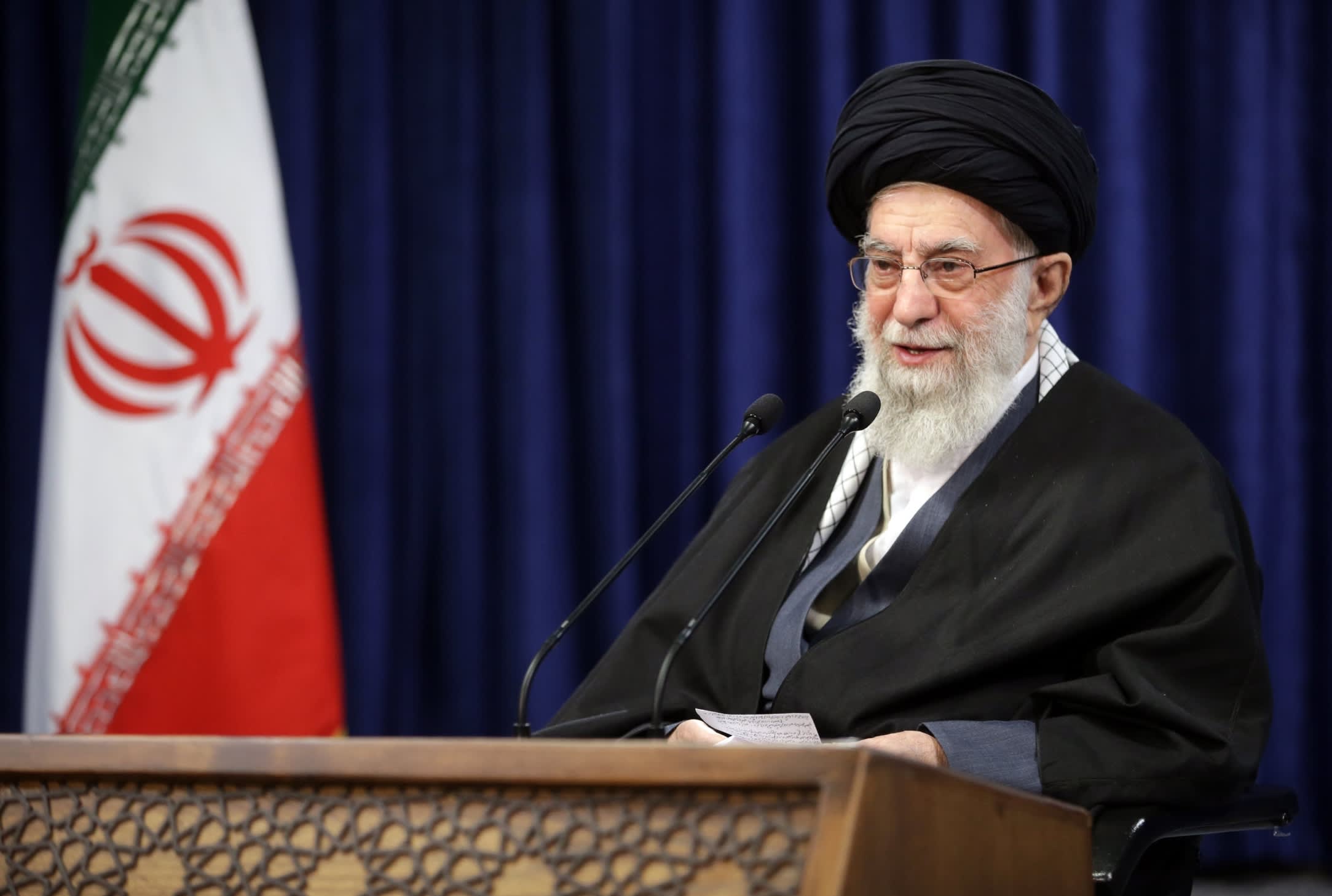
Iranian Supreme Leader Ali Khamenei addresses people via a live broadcast on state television on the occasion of the anniversary of the 1978 Qom protests in Tehran, Iran on January 08, 2021.
Anadolu Agency | Anadolu Agency | Getty Images
Iran’s latest move in violation of the 2015 nuclear deal has caught international powers’ attention, raising the stakes for a return to the multi-country agreement as it demands the lifting of U.S. sanctions.
UN nuclear watchdog the International Atomic Energy Agency (IAEA) last week confirmed a report that Iran has begun producing uranium metal, a step that violates the parameters of the 2015 deal — also known as the JCPOA — which lifted sanctions on Iran in return for curbs to its nuclear program.
Non-enriched, uranium metal has little civilian use and is different from enriched uranium, which can be used for nuclear energy.
Iran says it activity is meant to produce fuel for a research reactor. IAEA inspectors confirmed a minutely small volume of 3.6 grams (0.1 ounces) of the substance at an Isfahan facility — less than the size of a thimble.
But it’s raised the alarm for some in the international community, since a greater quantity of the metal — about half a kilogram, according to experts — can be used to build the core of a nuclear bomb.
An annotated satellite image of construction at Iran’s Natanz uranium enrichment facility, with analysis by the Middlebury Institute of International Studies at Monterey.
Photo: Planet Labs Inc. | AP
“This is one of the most serious nuclear steps that they’ve taken,” a former Obama administration official involved in the original JCPOA negotiations told CNBC, referring to Iran. “It’s pretty provocative.” The former official spoke on condition of anonymity due to professional constraints on speaking to the press.
The U.K., France and Germany, all supporters of the JCPOA, said in January that Iran has “no credible civilian use for uranium metal.” They described the news as “deeply concerning.”
“The production of uranium metal has potentially grave military implications,” they warned.
Behnam Ben Taleblu, a senior fellow at the Washington-based Foundation for Defense of Democracies, said the Europeans’ statement is significant.
“You know you’re in trouble when the Europeans don’t buy the ‘civilian use’ argument put forward by Tehran. That’s what should ring alarm bells,” he said.
Incremental rollbacks
Iran has been incrementally rolling back its compliance to the JCPOA since May 2019, one year after the Trump administration withdrew from the deal and started imposing heavy “maximum pressure” sanctions on the country for what it described as its destabilizing regional activities.
Tehran’s moves most recently included increasing its uranium enrichment and stockpile levels beyond the limits set out in the deal, in an effort to pressure Washington to lift the sanctions — which have crippled the Iranian economy — and return to the deal, something the Biden administration has expressed its desire to do.
Importantly, Iran’s officials stress that the moves are reversible and have held out hope for a return to the agreement under Biden. But the White House says that Iran must come back into full compliance with the deal first, while Iran says U.S. sanctions must be lifted first, setting up a potential stalemate.
‘It’s reversible’
Still, regional experts believe the nuclear deal remains salvageable.
Iran is “trying to underscore how important it is to them to get the U.S. back in the JCPOA,” the former Obama official said. “I don’t think that this undermines at all the possibility of getting back in the JCPOA, but it is troubling.”
Aniseh Tabrizi, a senior research fellow and Iran expert at the Royal United Services Institute, agreed.
“It’s reversible, especially if done in the short term,” she said of Iran’s uranium metal production. “There has been condemnation, but no signal that this is the end of any attempt to revive talks on the JCPOA.”
In the meantime, however, “Iran has the capability of putting significant short term pressure” on the deal’s other signatories, said Sanam Vakil, deputy head of the Middle East North Africa program at Chatham House, a U.K. think tank.
“But over the long run,” she said, “it’s the United States that needs to be brought into the joint commission discussions,” because the U.S. is central to the deal and sanctions relief for Iran.
A key date to watch is Feb. 21 — at which point, new hardline laws passed by Iran’s parliament take effect, including a ruling that prevents further IAEA inspections. But it’s crucial, Vakil said, that the crisis be contained before Iran’s June elections.
“If the international community is really keen on containing this crisis with Iran, rolling out the JCPOA compliance strategy and setting in motion a plan to talk with Iran and the joint commission is essential,” she said. “The sooner that they can roll that out, the better they can sort of mitigate Iran’s further efforts of upping the ante.”
For FDD’s Ben Taleblu, Iran’s tactics are so far both dangerous and futile. “Tehran’s continuing nuclear escalation means that its new violations are necessarily more dangerous,” he said. “Despite Iran’s escalatory strategy, neither the Trump or Biden team has as of yet reversed course on major economic sanctions.”




